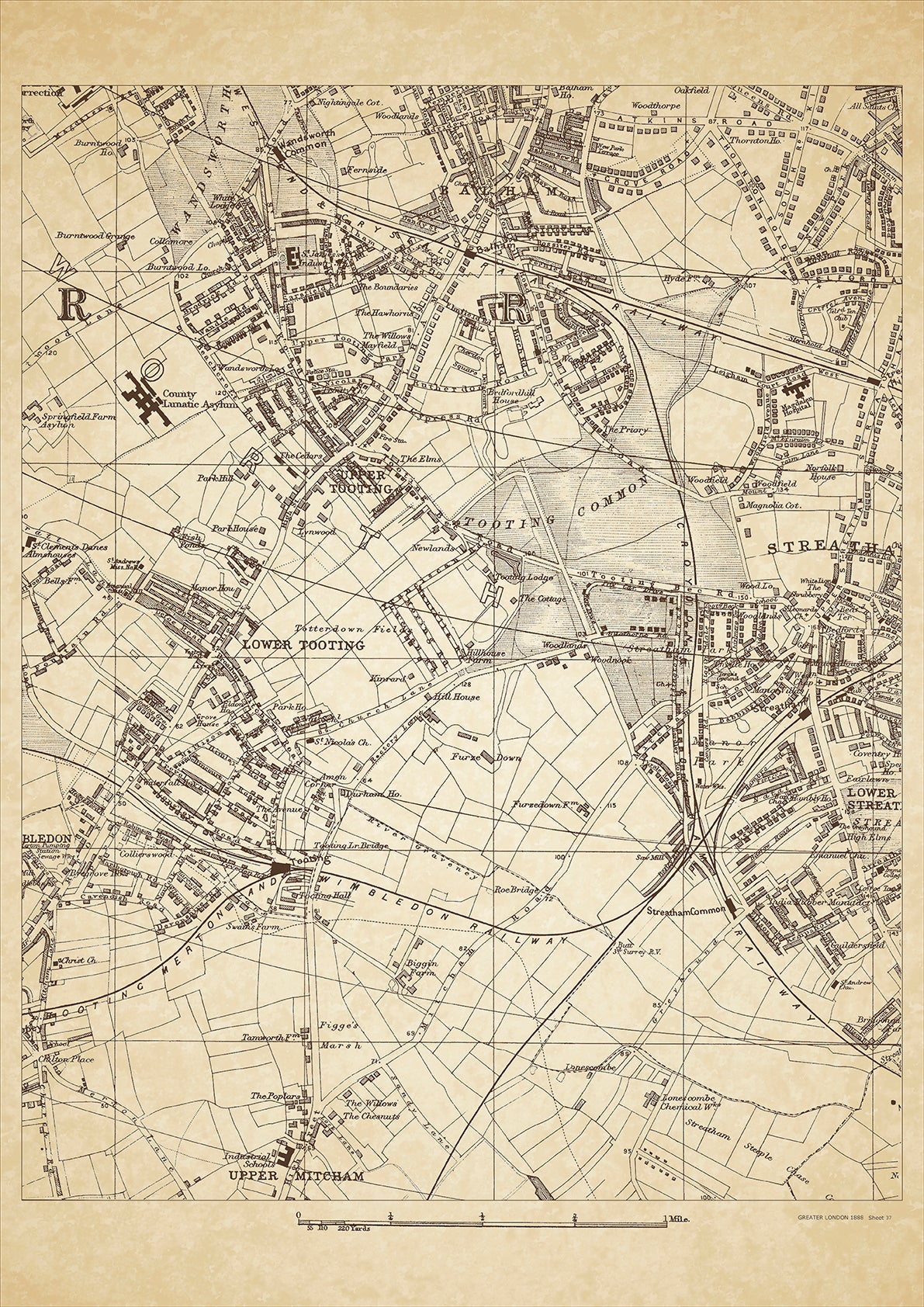Elite Wall Decor
Greater London in 1888 Series - showing Tooting, Balham, Streatham (west), Upper Tooting, Lower Tooting, Tooting Common, Upper Mitcham - sheet 37
Greater London in 1888 Series - showing Tooting, Balham, Streatham (west), Upper Tooting, Lower Tooting, Tooting Common, Upper Mitcham - sheet 37
Couldn't load pickup availability
This digital download is a high-quality 300dpi JPG image of a London street atlas map dated 1888. It is enlarged, and sized to print if required at A2 dimensions (59.4 cm x 42 cm), or simply view it in close up on your computer screen using for instance Windows Photo or similar.
These maps are sharp and clear. All railway lines and stations are shown and named.
Tooting, Balham, and Streatham were all located in the southern part of London in 1888. At the time, these areas were primarily rural and agricultural, with small pockets of urban development. However, as London grew and expanded during the late 19th century, these areas began to see more development and population growth.
Tooting, located in the borough of Wandsworth, was known for its large commons and open green spaces. The Tooting Bec Lido, which opened in 1906, was a popular destination for locals and visitors alike. In 1888, Tooting was primarily a working-class area, with many residents employed in trades such as agriculture, brewing, and distilling.
Balham, also located in Wandsworth, was known for its market gardens and orchards. However, in the late 19th century, the area began to see more urban development, including the construction of the Balham and Tooting Railway in 1890. Balham was primarily a middle-class area in 1888, with many residents employed in clerical and administrative positions.
Streatham, located in the borough of Lambeth, was known for its large country estates and mansions. In the late 19th century, these estates began to be subdivided and developed into housing estates for middle-class residents. The area was also home to several important institutions, including the Royal Normal College for the Blind and the Streatham Hill Theatre. Streatham was primarily a middle-class area in 1888, with many residents employed in professional and managerial positions.
Today, visitors to Tooting, Balham, and Streatham can still see many historic landmarks and buildings from this era. These areas have also undergone significant changes and development in the years since 1888, and are now vibrant and diverse parts of modern-day London.
Whether you're a history buff, a cartography enthusiast, or simply looking for a unique piece of decor for your home or office, this map is sure to delight. It's a piece of history that you can own and enjoy for years to come.

